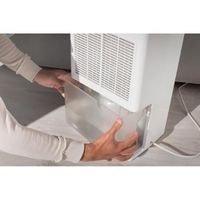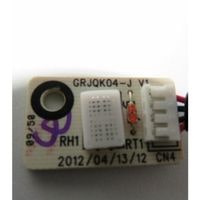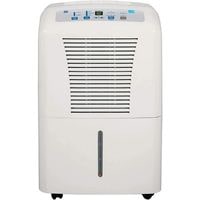GE Dehumidifier not working. GE Dehumidifiers often work effectively at reducing excess moisture in your home but if it starts to malfunction, it can quickly turn into an uncomfortable, sticky situation. Before you start shopping for a new dehumidifier.
However, there’s a good chance that the problem is something simple and easy to rectify.
Before troubleshooting the appliance itself, check first to make sure it’s plugged all the way into the outlet, and then plug something else into the same outlet to see if the problem lies with the power.
If that hunch doesn’t pay off and you find that everything related to the unit itself seems to be functioning correctly, move on by checking these areas.
GE Dehumidifier not working

If your dehumidifier is not collecting water and you have already reset it, check to make sure the drainage hose is coming up out of the sump pump with a bucket underneath (beeping or pressing the bucket may activate the sump pump). Check that nothing is blocking the suction of air into the condensation unit.
Problems with incoming power
If your outlet isn’t working for whatever reason, it is possible that the circuit breaker or fuse box is faulty.
However, assuming this isn’t the case and there is no apparent reason why electricity isn’t reaching your home, you can rule out the possibility that your outlet simply needs to be replaced.
Humidity remains high
Before using your dehumidifier the first time, run it for 24 hours and check that it has correctly reduced moisture levels.
This will take a while, depending on the size of the room and how humid it is in comparison to the air outside.
Make sure no obstacles such as furniture or curtains are in front of your appliance, this would block the venting and affect its efficiency.
If necessary, you can use your dehumidifier’s control settings to adjust how little moisture is extracted from the room.
Lowering these settings will help reduce humidity, but won’t necessarily clear up all allergens or smells.
To remove odors more quickly, make sure windows are open an inch or two so fresh air can circulate through your space.
Bucket switches do not have continuity
When the water bucket is filled up to its brim, a bucket switch opens and closes to stop the dehumidifier from drying out the room.
If the bucket switch fails while it is closed, it will prevent the dehumidifier from turning on even when there is water in the bucket.
To determine if the bucket switch is working properly, use a multimeter to test for continuity between terminals. If there is no continuity with terminals X1 and X3, replace the sensor.
Defective Compressor
The compressor is used in the dehumidifier. If any component isn’t working properly, then the system cannot cool the air. It is usually not the compressor that goes out.
It is usually one of the other components in the system. Before replacing a component, first test all of them to see which one needs to be repaired or replaced.
It is easiest to check electrical components by using a multimeter. You should measure for continuity before you change/repair any component.
Faulty Humidistat
The humidistat monitors the level of moisture in the air, and when it’s too high, the contacts close to tell the dehumidifier to run.
If the humidistat fails, it doesn’t let you know that there’s a problem so use a multimeter to test it for continuity. If it has none, you’ll need to replace it with a new one.
A humidity sensor is defective

The humidity sensor detects the amount of moisture in a room’s air.
When the air becomes excessively moist, the sensor sends a signal to the running dehumidifier so that it can turn on and release water vapor into the air.
If it isn’t possible to detect humidity levels, or if there is some defect in the sensor, it won’t be possible to run the dehumidifier and this will put you at great risk of potential problems coming up with mold growth eventually.
Control Board issue
The control board monitors the amount of moisture in the air. A sensor allows the assembly to close if the moisture level gets too high, allowing the dehumidifier to work.
The control board may not recognize when this step takes place, or may simply be defective, in which case no water will be released.
Related Guides
